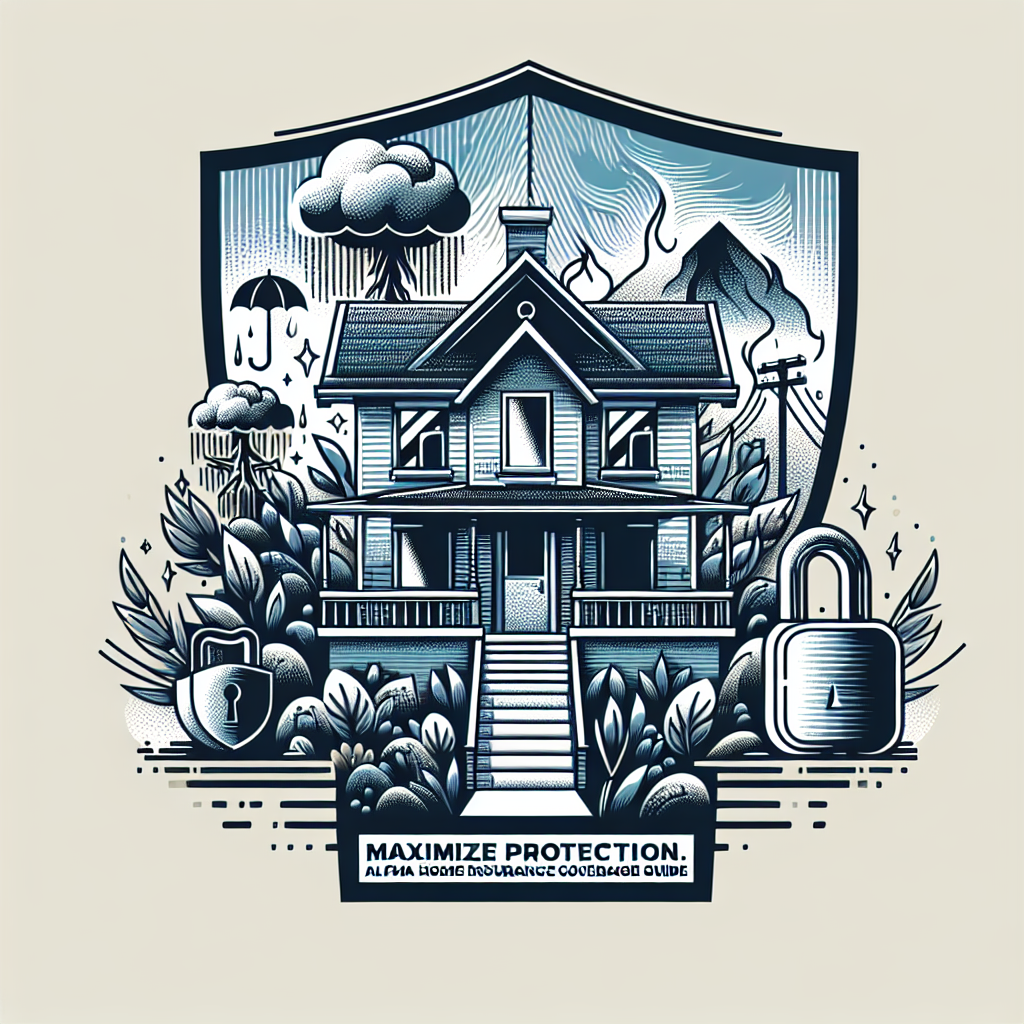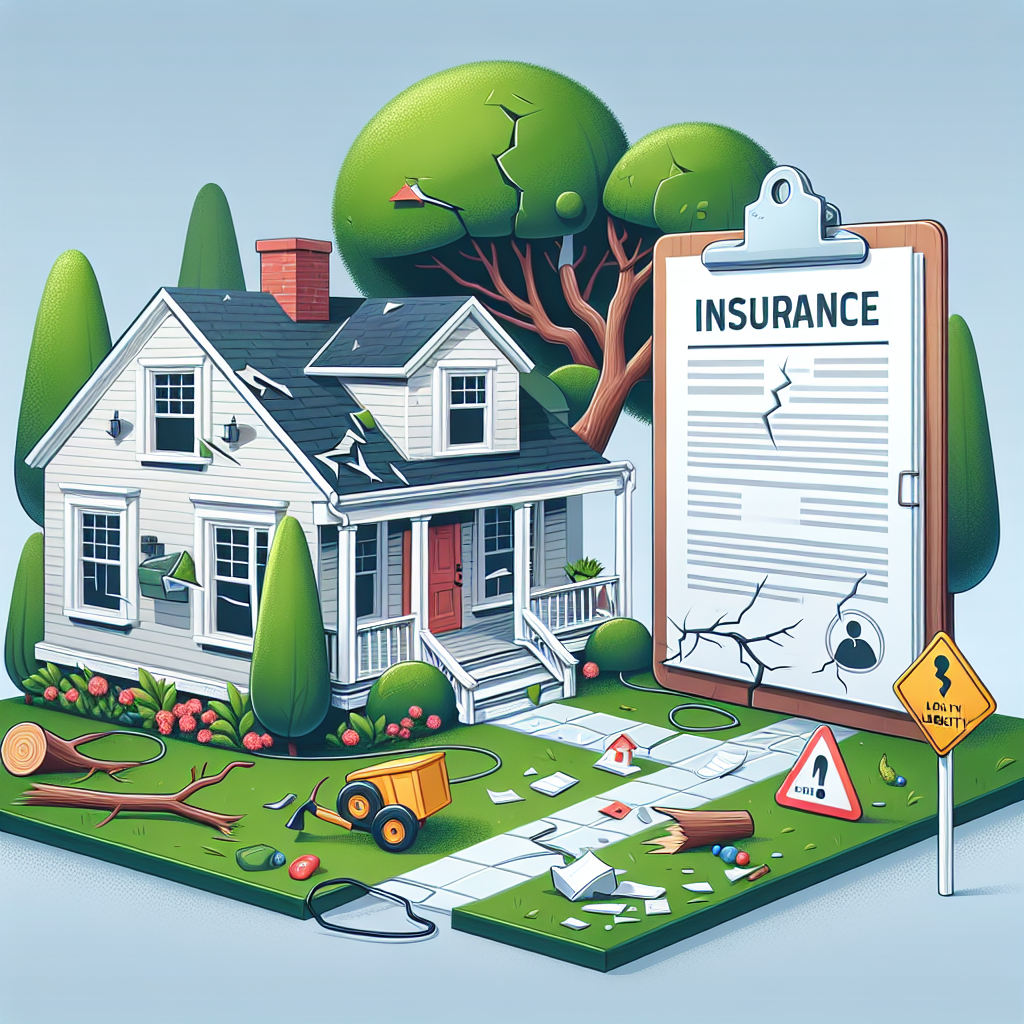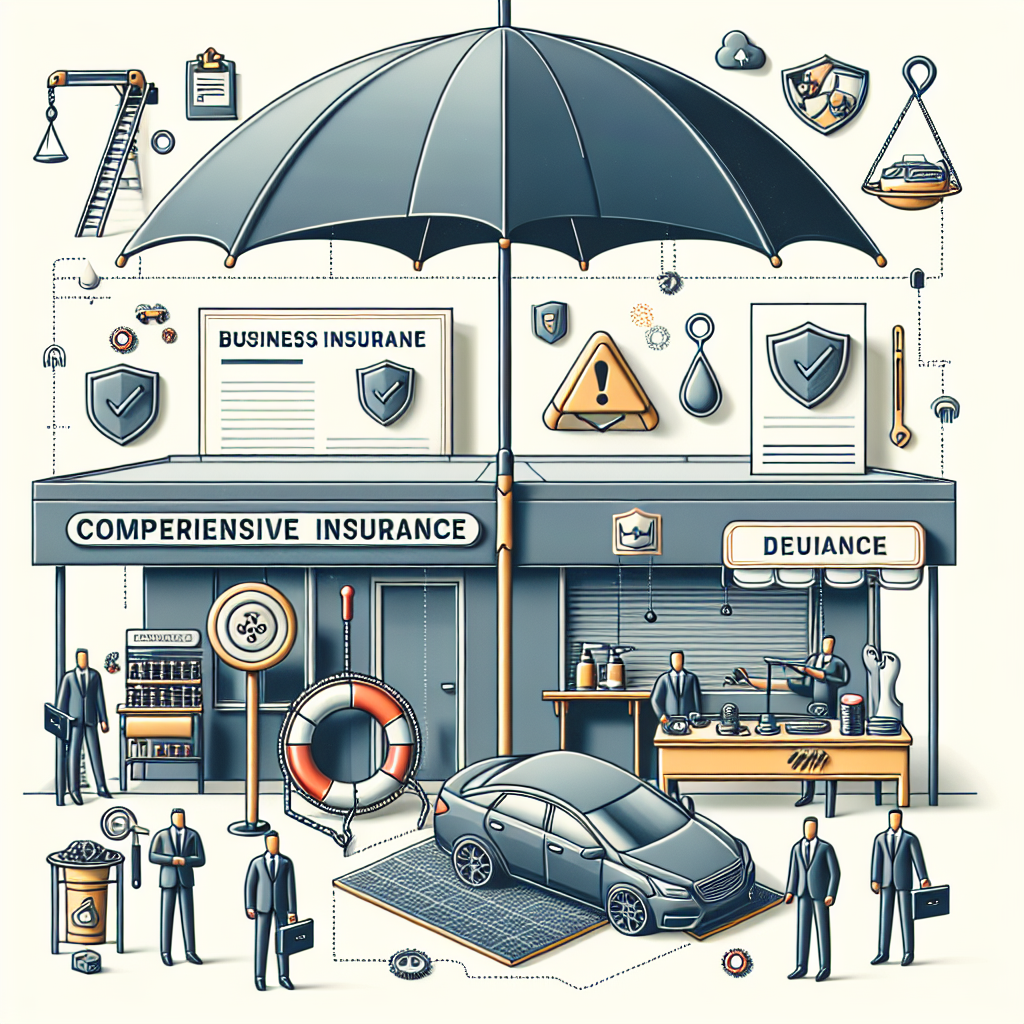Filed under Home Insurance on
Home Health Care Business Insurance Coverage Guide

Insurance is one of the most strategic investments a home health organization can make. You deliver complex care in unpredictable environments, often with thin margins and heavy regulatory oversight. One adverse event can derail growth—or worse. This Home Health Care Business Insurance Coverage Guide walks you through the protections that matter, what insurers look for, and practical steps to reduce risk while keeping premiums in check.
Why coverage matters for home health providers
Home-based care puts clinicians and caregivers into constantly changing environments—private residences, assisted living apartments, and temporary housing—where hazards vary with every visit. According to the Bureau of Labor Statistics, home health aides and nursing assistants experience above-average injury rates due to patient handling, slips and trips, and exposures in client homes. Add vehicle use, privacy obligations, and payor audits, and it’s clear why a tailored insurance program is essential.
Cyber exposure is also rising. IBM’s 2024 Cost of a Data Breach Report again found healthcare to have the highest average breach cost, topping $10 million per incident. Home health agencies are attractive targets because they hold protected health information, process electronic claims, and often rely on remote access to scheduling, documentation, and billing systems.
Well-designed coverage protects balance sheets, satisfies contract requirements, supports accreditation, and enables you to win facility partnerships. It also helps you rebound quickly when something goes wrong, keeping your team focused on patient care.
What risks do home health providers face?
Clinical and patient safety risks
- Medication administration errors, wound care complications, infection control lapses
- Falls or injuries during transfers or mobility assistance
- Allegations of abuse, neglect, or privacy violations
- Telehealth miscommunications or documentation gaps
Operational and business risks
- Caregiver injuries while lifting, driving, or navigating home hazards
- Automobile accidents in personal or company vehicles
- Theft of medical equipment or damage in transit
- Employee disputes, wrongful termination, or wage-and-hour claims
Regulatory and financial risks
- Medicare/Medicaid audit recoupments and billing errors
- HIPAA violations from lost devices, phishing, or misdirected emails
- Contractual indemnity obligations with hospitals, SNFs, and payors
- Leadership liability tied to governance, financial decisions, or investor disputes
Core policies to consider
Think of your insurance program as layers that interlock to address different risk categories. In this Home Health Care Business Insurance Coverage Guide, we break down the policies most home health and personal care agencies should evaluate.
General liability
Protects against third-party bodily injury, property damage, and personal/advertising injury (like libel). If a family member trips over your clinician’s bag or alleges damage to flooring during a visit, this coverage responds. Look for occurrence-based forms, medical payments coverage, and the ability to add additional insureds with primary and noncontributory wording for facility contracts.
Professional liability (medical malpractice)
Covers claims arising from the delivery of professional services—assessment, care planning, nursing, therapy services, medication management, and more. Policies are often claims-made, so mind the retroactive date and secure tail coverage if you change carriers or wind down operations. Ensure abuse and molestation (A&M) coverage is included or endorsed, as many placements exclude it by default.
Workers’ compensation
Pays for employee injuries and lost wages from workplace incidents, including strains from patient handling. Strong return-to-work and ergonomics programs help control costs and experience modifiers. Confirm correct class codes for skilled care versus companion care to avoid audit surprises.
Commercial auto and HNOA
If you own vehicles, you need commercial auto. Even if staff drive personal cars, Hired and Non-Owned Auto (HNOA) liability is critical; it defends the agency when you’re named in a lawsuit following an accident during work duties. Consider adding hired car physical damage if you rent vehicles.
Property and inland marine
Protects office contents, leasehold improvements, and mobile equipment like portable wound vacs, laptops, tablets, and diagnostic tools. Inland marine (sometimes called equipment floater) extends coverage while items are in transit or stored offsite. Include business income and extra expense to cover lost revenue and relocation costs after a fire or extended outage.
Cyber liability and privacy
Addresses costs from privacy breaches, ransomware, or business email compromise—notification, credit monitoring, forensics, legal counsel, regulatory fines where insurable, and extortion payments subject to law. Ask for coverage that includes both paper and electronic PHI, sublimit for PCI where applicable, and access to incident response vendors. Multifactor authentication and phishing training can materially reduce premiums.
Employment practices liability (EPLI)
Responds to allegations of discrimination, harassment, retaliation, or wrongful termination. Home health faces heightened exposure due to dispersed supervision and a labor-intensive model. Seek third-party liability coverage to address claims from patients or family members interacting with your staff in the home.
Crime and fidelity
Protects against employee theft of money, securities, or property. Third-party crime endorsements can address allegations of theft of a patient’s cash or jewelry by your staff. Many facility contracts require a dishonesty bond; confirm whether a surety bond or insurance policy satisfies the clause.
Umbrella or excess liability
Adds higher limits above your general liability, auto, and sometimes employers liability. Hospitals, large referral partners, and managed care organizations may require $5 million or more in total limits.
Regulatory and medical billing errors & omissions
Designed to respond to inadvertent billing errors, coding mistakes, or payer audits. While not a substitute for compliance, it can help with defense and some penalties where allowed by law. Review sublimits and carve-backs carefully; forms vary widely.
Directors and officers (D&O)
Protects the organization and its leaders from claims alleging mismanagement, breach of fiduciary duty, or misrepresentation. Useful for growing agencies, those with outside investors, or nonprofit boards.
Policy limits, endorsements, and contract language
Insurance requirements often flow from referral sources or payer agreements. Common requests include $1 million per occurrence/$3 million aggregate for general and professional liability, $1 million auto liability, and $1 million cyber, with an umbrella to reach higher total limits. Tailor to your revenue, patient acuity, and contracts.
Key endorsements and terms to watch:
- Additional insured, primary and noncontributory: Required by many facilities; ensure your carrier can issue certificates promptly.
- Waiver of subrogation: Often requested on GL, auto, and workers’ comp; understand the impact on premiums.
- Abuse and molestation: Confirm coverage, limits, and background check conditions; many claims originate in home settings.
- Occurrence vs. claims-made: GL is typically occurrence; professional, cyber, and EPL are often claims-made. Keep your retroactive date continuous and plan for tail coverage if switching carriers.
- Incident reporting vs. claim reporting: Know the timelines and documentation requirements to preserve rights under claims-made forms.
- Inland marine scheduling: Provide values for high-cost portable devices and wound care equipment.
- HNOA named insured clarity: Cover W-2 employees and vetted 1099s per your operations.
Cost: what drives your premiums?
Premiums reflect your risk profile, loss history, and insurer appetite. Market conditions shift, but these drivers are consistent:
- Services offered and patient acuity: Skilled nursing, infusion, or complex wound care typically rate higher than companion or homemaker services.
- Revenue and payroll: Bigger operations present more exposure. Break out payroll and revenue by discipline (RN, PT, OT, HHA) for better pricing.
- Claims history: Frequency and severity matter. Demonstrate corrective actions after losses.
- Geography: Urban driving, litigious venues, and coastal property risk influence rates.
- Use of subcontractors: Insurers prefer formal contracts, hold-harmless clauses, and proof of equal or better insurance from 1099 providers.
- Fleet management: MVR standards, telematics, and defensive driver training can materially reduce auto and umbrella premiums.
- Cyber hygiene: MFA, endpoint detection, backups with immutability, and phishing training often unlock better cyber terms.
- Accreditation and quality metrics: Joint Commission, CHAP, or ACHC accreditation signals strong governance, often viewed favorably.
While every account is unique, smaller non-medical agencies may spend a few thousand dollars annually on basic lines, while multi-site skilled providers with fleets and higher limits can budget into the mid-five figures or more. The goal of this Home Health Care Business Insurance Coverage Guide is to help you understand why those differences exist and how to influence them.
Practical risk controls that reduce losses and premiums
Loss prevention is not just a safety imperative—it is a pricing strategy. Insurers reward well-documented controls. Use this section of the Home Health Care Business Insurance Coverage Guide as a checklist for your next quality meeting.
- Patient handling and mobility: Train on gait belts, slide sheets, and two-person assists; use standardized transfer assessments; document fall prevention plans.
- Medication management: Barcode scanning or double-check protocols for high-alert meds; reconcile at each visit; clarify who administers vs. reminds.
- Infection prevention: Hand hygiene audits, PPE policies, and post-exposure protocols; align with CDC home care guidance.
- Home environment screening: Pre-visit checklist for pets, smoking, clutter, rugs, stairs, and lighting; escalate unsafe conditions to supervisors.
- Driver safety: MVR criteria, annual checks, no-phone-use policy, telematics for owned vehicles, and post-accident reviews.
- Workplace violence preparedness: De-escalation training, check-in/check-out procedures, and panic app usage for field staff.
- Cybersecurity: MFA for email and EHR, endpoint protection with EDR, encrypted devices, least-privilege access, quarterly phishing tests, and offline backups.
- Vendor and 1099 oversight: Business associate agreements, insurance verification, and orientation on your policies.
- Incident reporting culture: Encourage near-miss reporting; trend analysis leads to targeted interventions.
- HR foundations: Consistent hiring, background checks, reference verifications, harassment training, and clear wage-and-hour practices.
Real-world claim scenarios and how coverage responds
- Medication error: A nurse administers the wrong dosage, leading to hospitalization. Professional liability covers defense and settlement; risk management support helps revise protocols. Potential severity: high, especially with high-alert medications.
- Slip-and-fall during transfer: A patient falls moving from bed to chair despite assistance. General liability addresses bodily injury to the patient; if an employee is injured, workers’ comp applies. Abuse and molestation coverage is separate and should be verified for any related allegations.
- Auto accident in personal vehicle: A caregiver rear-ends another car en route to a visit. The caregiver’s personal auto responds first; HNOA liability defends the agency when it’s named in the suit. Umbrella may extend limits.
- Ransomware attack: Scheduling and billing are locked for days, and PHI may be exposed. Cyber policy provides incident response, forensics, legal counsel, notification, credit monitoring, and business interruption benefits, subject to sublimits and conditions.
- Audit and recoupment: A payer disputes documentation and seeks repayment for a set of claims. Medical billing E&O may provide defense and limited coverage for certain penalties where permitted by law; robust compliance remains your primary protection.
How to buy the right coverage
Buying insurance is more than collecting quotes. Use a deliberate process to maximize value. This Home Health Care Business Insurance Coverage Guide recommends the following approach:
- Map your exposures: List services by discipline, patient volumes, visit counts, and territories. Note telehealth, infusion, or specialty programs.
- Gather requirements: Compile insurance terms from referral partners, payors, and facility contracts.
- Select a specialist broker: Choose one with deep home health experience, access to top carriers, and certificate issuance capabilities.
- Prepare clean submissions: Include loss runs, safety manuals, cyber controls, driver standards, and accreditation proofs.
- Market strategically: Approach carriers that understand home health; consider program administrators and admitted options before surplus lines when possible.
- Compare forms, not just price: Scrutinize exclusions, A&M, retro dates, defense inside vs. outside limits, and sublimits that meaningfully affect coverage.
- Plan for claims support: Ask about dedicated healthcare claims teams, panel counsel, and risk engineering resources.
- Decide limits with scenarios: Model worst-case events—catastrophic patient injury, multi-car crash, or major breach—and set umbrella/cyber limits accordingly.
Compliance, accreditation, and insurance
Accreditation bodies such as The Joint Commission, CHAP, and ACHC evaluate governance, clinical quality, and safety. Their standards dovetail with insurer expectations: clear policies, staff training, incident reporting, and performance improvement. Strong survey results can enhance carrier confidence and negotiation leverage.
On the regulatory front, the Office of Inspector General continues to prioritize documentation integrity and billing accuracy. A proactive compliance program—training, audit cycles, corrective action plans—helps prevent issues and supports defense if a dispute arises. Insurers often ask about your compliance infrastructure when underwriting regulatory and E&O coverage.
Frequently asked questions
This section of the Home Health Care Business Insurance Coverage Guide addresses common concerns that come up during renewals and audits.
- Do I need professional liability if we provide only non-medical care? Yes. Allegations of negligence can still arise from assistance with bathing, transfers, or reminders; a tailored policy covers these exposures.
- Are 1099 caregivers covered? Typically only if your policy includes contractors as insureds and you have contracts and certificates of insurance from them. Many carriers require equal or higher limits and your agency named as additional insured.
- Is abuse and molestation coverage standard? No. Confirm it is included on GL and professional forms, with appropriate limits and background check conditions.
- What about rental cars? Add hired auto liability. Consider hired auto physical damage if you frequently rent vehicles for supervisors or clinicians.
- How does tail coverage work? For claims-made policies, tail extends reporting after a policy ends for incidents that occurred during the active period. Secure tail if you sell, merge, or change carriers without continuity of the retro date.
- Does cyber cover paper records? Good policies do. Confirm that privacy coverage applies to both electronic and physical PHI.
- Do states require specific bonds or insurance? Some Medicaid programs and contracts require surety bonds or specified limits. Review state rules and payer agreements.
- What AM Best rating should I look for? Many stakeholders prefer carriers rated A- or better, reflecting stronger financial stability.
Renewal checklist: documents and data that speed approvals
- Five years of currently valued loss runs for all lines
- Organizational chart, ownership details, and leadership bios
- Revenue and payroll by service line and location
- Clinical policies for medication management, infection control, and incident reporting
- Driver roster with MVR standards and any telematics reports
- Device inventory for laptops, tablets, and medical equipment with total values
- Cybersecurity overview: MFA deployment, backup strategy, EDR tools, and training cadence
- Contracts requiring additional insured or waiver of subrogation language
- Accreditation certificates and latest survey results
Build-your-program roadmap
- Baseline assessment: Catalogue exposures by service, patient mix, and geography.
- Set coverage objectives: Define required and desired limits based on contracts and risk tolerance.
- Engage a specialist broker: Align on marketing strategy and timeline, ideally 60–90 days before renewal.
- Elevate risk controls: Implement quick wins—MFA, transfer training, MVR standards—before marketing.
- Market and compare: Evaluate forms, exclusions, and claims support alongside price.
- Bind and brief: Train managers on how to use the policy, incident reporting, and certificate requests.
- Monitor and improve: Quarterly loss reviews and control enhancements to influence the next renewal.
Trends shaping home health insurance
Several market shifts are influencing availability and pricing:
- Higher scrutiny on A&M: Carriers increasingly require documented background checks, training, and chaperone protocols for intimate care tasks.
- Cyber underwriting hardening: MFA, secure backups, and endpoint security are quickly becoming minimums. Without them, pricing and deductibles climb—or coverage may be declined.
- Auto severity: Distracted driving and medical inflation push up verdicts and settlements; telematics and strict phone policies are favored controls.
- Data-driven underwriting: Carriers value operational metrics—fall rates, medication error trends, and visit completion accuracy—as proxies for risk quality.
- Telehealth normalization: Ensure your professional liability explicitly includes virtual care and cross-state practice where applicable.
Common pitfalls to avoid
- Allowing a gap in claims-made coverage or losing the retroactive date when switching carriers.
- Assuming employees’ personal auto insurance protects the company; without HNOA, the agency is exposed.
- Relying on generic GL without professional liability; home care is inherently professional.
- Neglecting cyber after moving to e-scheduling and EHR; healthcare remains the top-cost breach industry.
- Overlooking subcontractor risk: No contract, no COI, no indemnity—no protection.
Putting it all together
A resilient insurance program aligns with your clinical quality goals and growth plan. Start with the essentials—general and professional liability, workers’ comp, auto/HNOA, property/inland marine, and cyber. Add EPLI, crime, umbrella, and regulatory E&O as operations dictate. Maintain strong documentation, measure outcomes, and integrate risk controls into onboarding and supervision. With this Home Health Care Business Insurance Coverage Guide, you can make confident, informed decisions and present your agency as a best-in-class insured.
Final thoughts
Insurance is not just a requirement—it is a competitive advantage when built thoughtfully. It opens doors to partnerships, stabilizes cash flow after a loss, and signals professionalism to families and payors. Use the insights in this Home Health Care Business Insurance Coverage Guide to benchmark your current policies, close gaps, and elevate your risk profile. A well-structured program, coupled with disciplined operations, will help your home health organization deliver excellent care with confidence.





